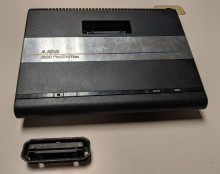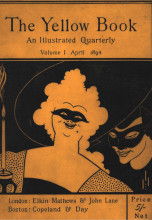Lauren Day
Library Blogs
Showing 701 - 710 of 1968 items

I’ve decided to write up a little post about one of my favorite genre's, romance. I've included a little bit of everything: data, history, and most importantly recommendations!

Our Atari 7800 stopped working after one of the tabs on the cartridge port broke off, resulting in games that wouldn’t sit properly in the system and were therefore unplayable. We only have one Atari 7800 system, so we were eager to try whatever we could to repair it. So when our student worker Justin found the specs online to 3D-print the replacement part we needed, we were eager to give it a try.

Our final two posts on items from the Kamada Collection will introduce texts related to Buddhism.

Prophecy is the second in S.J. Parris' mystery series set in Elizabethan England, featuring the real-life philosopher and scientist Giordano Bruno, who, in the series, works as a spy for Queen Elizabeth I. In this book, he attempts to foil a plot against the queen's life, which is being timed to coincide with an astronomical event.

How can we improve the familiarity and credibility between Library experts, resources and services we offer and the students, faculty and staff who use them? Whether we’re building new relationships or reconnecting with patrons/colleagues during assessment or user research activities, we have the opportunity to use certain marketing and communication best practices and tools during our user research to align clear and targeted communication with our key audiences.

In our last post, on poetry-related works in the Kamada Collection, we introduced illustrated manuscripts of the famous poetry collection Hyakunin isshu, or One Hundred People, One Poem Each, an anthology of Japanese poetry from the seventh to thirteenth centuries compiled by the courtier and poet Fujiwara no Teika (1162-1241). An incredibly popular collection, Hyakunin isshu inspired numerous alternate versions and parodies. We will introduce two such manuscripts below.

The Special Collections Research Center is pleased to announce a new exhibit, Circulating the Avant-Garde: Aesthetic Counter-Publics in the Little Magazines, 1890-1920. This exhibit was curated by Kayla Grant, PhD candidate in English literature.

Nourish your mind and body by celebrating National Wellness Month! The August display of Undergraduate Library books in the Shapiro Lobby highlights self-care through focusing and improving physical, mental, and emotional health.

Rising junior Estrella Salgado reflects on her experience as a Michigan Library Scholar during the summer of 2019. Her project led her to create an online exhibit about one of the world's greatest epics, the Ramayana. This experience led to increased cultural appreciation, effective organization skills, and a heightened interest in library careers.
